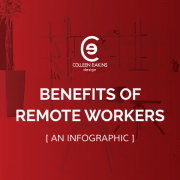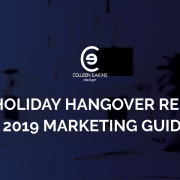Social consciousness and responsibility is a key asset in a business operation. It allows the consumers to respect and understand the brand further, which in turn will move in to loyalty.
For example, corporate social responsibility allows the business to donate to specific nonprofits or implement environmentally-friendly policies that circle back and represent the company in the best light. The charities chosen or the policies put in place in the workplace will be greatly beneficial and provide extra support to their local and global communities.
As our product and service offerings increase in options in the market, the customer experience must also increase. This includes feeling connected to a brand that has similar views, socially and politically, as their consumers, especially when it comes to what they individually feel is important.
Brands that do a phenomenal job in incorporating social responsibility and taking a firm stand in their beliefs are:
TOMS – One the most prominent social impact companies currently. When you buy a pair of TOMS shoes, you give a pair to someone in need. More recently, due to increase political and social push for change, you can find their stance for gun violence front and center on their homepage, with opting to send a postcard to your representatives, along with apparel choices for purchase.
Warby Parker – As the internet becomes the hotbed to find items easier than in-store, they are no exception. However, when you buy a pair of glasses you give a pair to someone in need to improve their capability to learn with their new increased sense of sight.
Bumble – Is a completely different internet dating experience than anything before. Born from the founder’s own experiences, Bumble hopes to empower women involved in internet dating and to limit sexual harassment that may be found on other dating sites and mobile apps.
Bucketfeet – A shoe company that works with over 40,000 artists from more than 120 countries. When a pair of shoes is bought, that artist receives $10 – the company has given over $600,000 back to the artist community since its launch in 2011.
Airbnb – During the 2017 Superbowl the home-sharing site drew attention when it responded to the nation-specific travel ban put in place by President Trump with their #WeAccept commercial. This was directly in line with the services that Airbnb provides and was an “easy” slot to fill to align with their brand.
Why is this so important to a brand?
According to a survey done by Sprout Social (a social media management software company), two-thirds of consumers say it’s important for brands to take public stands on social and political issues.
Also, respondents believe brands are more effective when they announce donations to specific causes and encourage followers to take specific action to support causes. However, the study showed that brands will not necessarily change their consumers mind, but do have a vehicle that can prompt change to be made, especially through the social media channel.
What is also interesting to note, is that millennials and centennials, especially, show a preference for brands that stand for a specific cause or issue, specifically 61% according to research by Kantar Consulting. That number increases drastically when a company shows a positive impact from their stance on a specific issue. This can be linked to the consumer looking for experiential versus the traditional transactional relationships with companies.
However, just picking a hot topic out of the sky, will obviously not be your best option. Steering clear from trendy topics only because they are predominant in our news cycles will not be the best for your company. Credibility is part of the consumer experience and how they can directly connect with brands who take a stance. To ensure the highest of integrity for your company, when sharing a stance, you must take a deep look and consider how your company relates to the world and consumers.
- Is this issue already embedded in to your core values and mission as a company? Can/should it be?
- What data from your demographics, purchasing habits, feedback show what your consumers care about and will show credibility towards a specific issue or cause?
- What is your marketing around your stance? Can this be intertwined in to an already existing campaign or does it need to be separate?
The cause must be ingrained in to your business model to have your consumers truly believe your product or service is credible and worthy of their support. And if there is a way to give consumers a chance to see the impact of their purchase (such as TOMS or Warby Parker), the rewards will be much higher.
The world is becoming smaller, faster, and ever-changing. If brands are looking to take a stand on a cause or issue that will represent their company and will help make a difference, it’s worth it to investigate on something your company can be proud of.
Let Colleen Eakins Design help you take a stand on what matters to you.
I received my Bachelors in Marketing and Certification in the Pastry Arts. I have managed a wide array of printed and digital marketing needs.


 ©2019, Colleen Eakins Design.
©2019, Colleen Eakins Design. ©2019, Colleen Eakins Design
©2019, Colleen Eakins Design
 ©2019 Colleen Eakins Design
©2019 Colleen Eakins Design ©2019, Colleen Eakins Design
©2019, Colleen Eakins Design ©2019 Colleen Eakins Design
©2019 Colleen Eakins Design